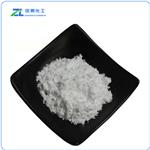Depending on the conditions used, various products may be obtained by the
post-chlorination of poly(vinyl chloride). Two types of product are made commercially, one by chlorination at low temperature and one by chlorination at high temperature.
(i) Low temperature chlorination. In one process, an aqueous dispersion of
poly(vinyl chloride) (containing a swelling agent such as chloroform) is heated
to about 50??C, illuminated and treated with chlorine. Under these conditions,
substitution occurs mainly at the unsubstituted methylene groups so that s-dichloroethylene units are formed. Commercial chlorinated poly(vinyl chloride) has a chlorine content of about 63-68% and is thus, in effect, a copolymer
of vinyl chloride and s-dichloroethylene (poly-s-dichloroethylene would have
73% CI):

The properties of chlorinated poly(vinyl chloride) of this type are in the main
similar to those of unplasticized poly(vinyl chloride). The most significant result of chlorination is the
elevation of softening point, as a result of which the maximum service
temperature is about 100??C compared to about 65??C for unplasticized
poly(vinyl chloride). Chlorination also leads to a deterioration in heat stability and an increase in melt viscosity and thus chlorinated poly(vinyl chloride) is rather more difficult to process; nevertheless, the material can be
satisfactorily extruded and injection moulded. The major application for
chlorinated poly(vinyl chloride) is in plumbing applications, particularly hot
and cold water distribution and hot, corrosive effluent handling.
(ii) High temperature chlorination. In this case, chlorination is conducted in
solution at about 100??C. A suitable solvent for the poly(vinyl chloride) is
tetrachloroethane. Under these conditions, substitution occurs extensively at
the -CH2- group and there is also chain scission. The most significant effect
of this type of chlorination is that the product is soluble in low cost solvents
such as acetone, butyl acetate and methylene chloride. Such solutions find
application in adhesives and protective coatings; they are also used for
spinning fibre which, because of its resistance to corrosive liquids, is utilized
mainly for chemical filter cloth. Poly(vinyl chloride) chlorinated in this
manner has a low softening point, low impact strength and poor colour
stability and is not used for the production of articles by conventional
moulding operations.


